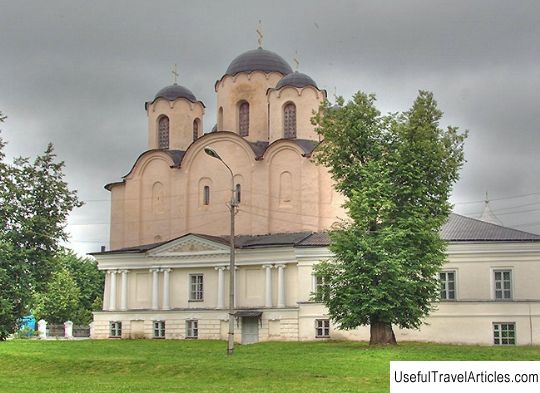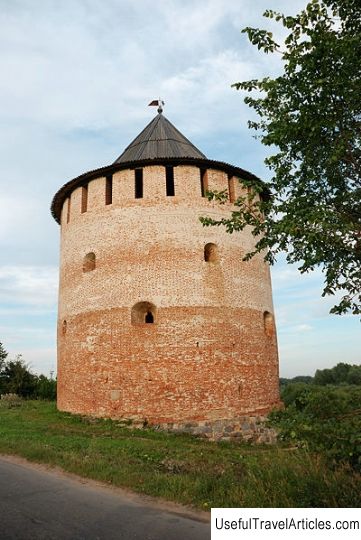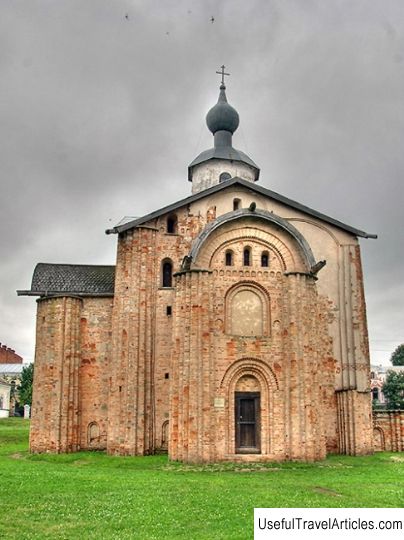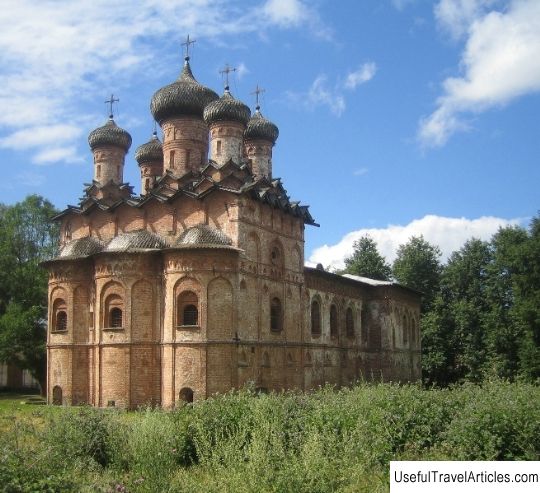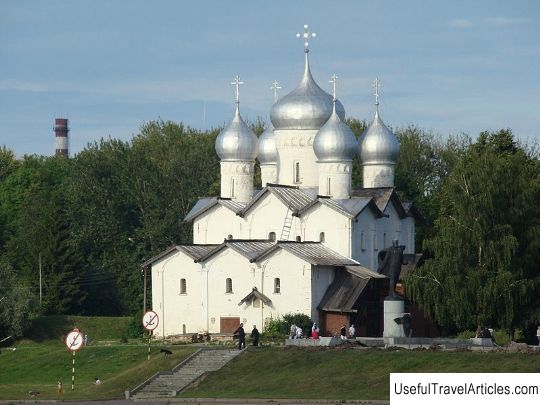Fortifications of Novgorod description and photos - Russia - North-West: Veliky Novgorod
Rating: 7,7/10 (302 votes) 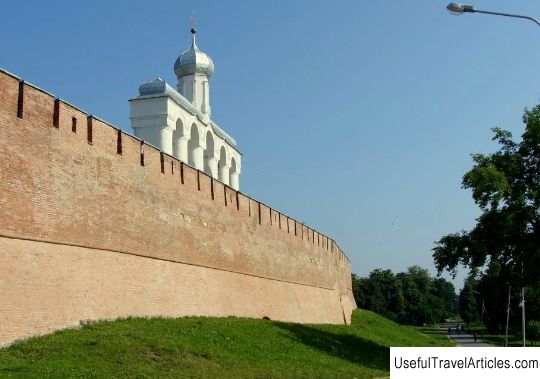
Defensive works of Novgorod description and photos - Russia - North-West: Veliky Novgorod. Detailed information about the attraction. Description, photos and a map showing the nearest significant objects. Photo and descriptionThe emergence of the first fortress in Veliky Novgorod dates back to the middle of the 11th century. The built fortress was located on an inconspicuous hill between two small ravines in the place where St. Sophia Cathedral is now located. During the reign of the Novgorod princes Mstislav Vladimirovich and Vladimir Yaroslavovich (11-12 centuries), the Kremlin expanded significantly and became the size that we see today. From that distant time, powerful ramparts have reached us, on which towers and stone walls were erected at the end of the 15th century according to the Italian model. The Kremlin walls are 1350 m long, and the walls are 4 m thick. The Kremlin had twelve towers, but only nine have survived. There is a tower that protrudes significantly beyond the wall - this is the Pokrovskaya tower, which faces the vulnerable outdoor side. It is for this reason that it has three-meter walls, and the facades have exactly 55 loopholes. Nearby is the Zlatoust Tower, which is significant for the fact that in the 17th century it became a prison, which is proved by its current name - Prison. The Kremlin has two round towers that are completely uncommon for Veliky Novgorod. The first of them is Metropolitan, which until the 17th century bore the name "Round", and the second - Fedorovskaya, which got its name from the nearby church, built in memory of the deceased brother of Alexander Nevsky - Fedor, who was soon canonized. In addition to the Kremlin in the 16th century, there were three more defensive lines of the city of Novgorod: the Big Earthen City, the Small Earthen City and the Vladychny Dvor, which was the residence of the head of the feudal Novgorod republic - the lord. The large earthen city or prison was considered the largest ring of fortifications, which covers almost the entire city - the Trade and Sofia side. Until the 14th century, there were no permanent fortifications along the perimeter of the city due to the constantly changing borders of the Novgorod posad. During the 10-11 centuries, the borders expanded slightly, mainly along the coast, and at the end of the 11th - beginning of the 12th centuries, rapid development of spaces began, which were significantly removed from the banks of the Volkhv. If an enemy siege was organized, then temporary forts were erected either from the side of the attackers or around the entire settlement. In 1372-1392, permanent fortifications were built by the inhabitants of remote streets and ends. For this reason, in places where the wealthier population lived, stone walls were erected, and in those places where the majority of the population were poor - earthen ramparts. In the 16th century in Novgorod there was a Small Earth City, the construction of which was carried out under Ivan the Terrible during 1582-1583. Small town included 8 wooden towers, which were located along the earthen rampart, while repeating the lines of the Kremlin walls; in front of him was a deep ditch. The total length of the Small Town was 984 soot, or 2 km. In 1611, during the Novgorod occupation, the Swedish troops almost completely destroyed the Small Earthen City, and it was restored only in 1633. After a resounding defeat near Narva, during the Northern War, Tsar Peter I made a decision on the strengthening of northwestern cities and fortresses. At the beginning of the 18th century, in order to strengthen the defense of the Kremlin in Novgorod, a system of earthen fortifications was built on the site of the Small earth town, which consisted of six bastions and adjoining curtains. After the victorious war of the north, Peter I decided to build a new capital of Russia on the former Vodskaya pyatina in the city of Novgorod. With the prosperity of St. Petersburg, it quickly lost its main importance and gradually Novgorod, which was not so long ago was Great, gradually faded away - therefore, the Small Earth City was also losing its position. The ramparts and bastions were hidden in 1820. To date, only the remains of two of them have survived from the bastions in Veliky Novgorod: the northern one, located on the bank of the Volkhv and called Nikolsky and the southern one, which is also on the bank of the Volkhv,        We also recommend reading Monument to Christ the Redeemer in the Andes (Cristo Redentor de los Andes) description and photos - Argentina Topic: Fortifications of Novgorod description and photos - Russia - North-West: Veliky Novgorod. |
